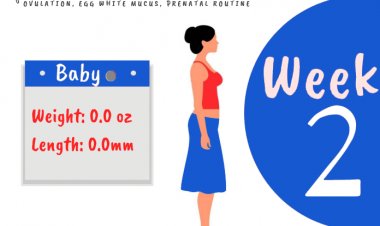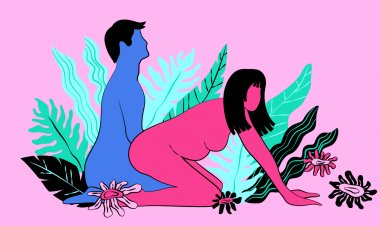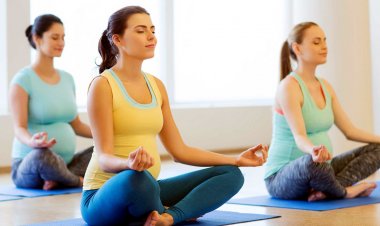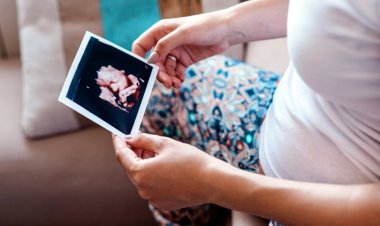Exercise for New Mom
Congratulations on becoming a mother, your little one is finally with you! You are now free from back pain, morning sickness, and protruding stomach. But now new symptoms such as fatigue, joint pain, loss of tolerance, and lack of sleep appear. Plus, you get to take care of your little one too! Fortunately, there are ways to make the transitional period from pregnant mother to newborn more comfortable. You guessed it: it's yoga.

Benefits of postnatal yoga (some of them):
- Revitalizes the core strength of your body
- regenerates muscles
- balances hormones
- Helps reduce anxiety and stressful feelings
- Helps to nourish, rest and rejuvenate your body
- Helps in the removal of toxins from the body and circulation of fluids
- Builds confidence in you to take care of your baby
The movement, balance, and relaxation in these postures mentioned below will help you feel strong, energized, and fit again. Please consult your doctor before practicing any of these postures. And as always, do each asana very slowly with ease.
Balasana (Child's Pose)
This pose is meant to get more sahajana (relaxation) and to practice deep breathing and this helps in blood circulation.
- Kneel on the floor, sit on the heels in such a way that both the toes are connected, and spread your knees to a comfortable position.
- Bring your torso between the thighs and bring your abs as close to the ground as possible and keep your forehead on the floor.
- Lengthen your tailbone, spreading it so that the base of your head is away from your neck.
- Maintain this posture for about 30 seconds to 1 minute and keep breathing deeply during this time.
Suggestion
- In child pose, practice a little Kegel exercise as well. Due to the stress and pressure of childbirth, the pelvic surface becomes loose and weak. Many women have to face the problem of urine discharge during coughing or laughing or loss of sexual sensation after delivery. These exercises help to strengthen and repair the surface of the pelvis.
- Identify the surface muscles of your pelvis (the muscles with which you hold urine in the middle) and stretch them for about 5 seconds. Then let them loose. Practice this at least 3-5 times daily to see the benefits!
Bhujangasana (Cobra Pose)
This asana helps strengthen your back muscles and spine and relieves back pain associated with childbirth. It also helps to strengthen the abdominal and buttock muscles.
- Lie on your stomach on a mat and leave the body loose.
- Place your palms under your shoulders, take a deep breath and lift your upper body keeping your hips and pelvis in place on the ground.
- Keep in mind that your shoulders should be away from your neck, face towards the front, and try to look up comfortably.
- Keep your feet together, contract your buttocks and form an arch with your back. Do not push beyond your capacity and stop stretching if you feel pain or feel uncomfortable. This will feel like a great stretch for your back!
- Stay in this posture for 10 seconds and then come back to the lying position on the ground. Do this 2-3 times.
Knee-Bending Navasana (Naukasana)
Due to the pressure of childbirth, many women can have abdominal separation during pregnancy and after childbirth. This mudra should be practiced very slowly and carefully and it can help in repairing and re-tightening the abdominal muscles. Be sure to ask your doctor whether it is safe for you to practice this pose.
- sit straight with your knees bent by the buttocks
- Very slowly, lift your feet off the floor, going back at a 45-degree angle and keeping your back straight.
- Go to that easy safe, point where you can keep your balance, and don't hold your breath. First, you always have to be able to take deep breaths with ease, then the balance will come automatically.
- Use your hands to hold your knees while maintaining this pose for about 30 seconds. During this, keep taking deep breaths.
Uttana Shishosana (Extended Puppy Pose)
With this posture, the vertebrae are well stretched, due to which the spine gets the right position.
Keeping your hands and knees on the ground (wrists should be under shoulders and knees under hips), lift hips up. Breathe out.
- Try to keep your legs straight, arms fully extended out, palms facing down and forehead resting on the ground. Breathe in.
- Keep your feet on the ground. Stay in this posture for 10 seconds and then return to the original position while taking a deep breath. Repeat 3-5 times.
Viparita Karani (legs, wall-supporting pose)
This asana helps in opening up the body and also helps in relieving the accumulated stress to some extent. It also helps in dealing with fatigue which is a common symptom that arises after delivery. You will need to take the support of a wall for this pose. Have a Take (such as a Thick Blanket)
- Which stays 5-6 inches away from the wall. Sit with the side of your right side of your body against the wall.
- Bring your feet to the wall and lie down with your buttocks against the wall (or as close to the wall as possible) while your support should be under your torso/pelvis: all at once. Do it very slowly!
- Your torso should remain in a slightly arched form (supported by the tech) and the base of the head should remain free from the neck. Bring your hands out from both sides and palms should be facing upwards.
Stay in this pose for about 5 minutes, relaxing your body and taking deep breaths. You can close your eyes and observe your body in the meantime, which is very calming.

 mybabycare
mybabycare 















